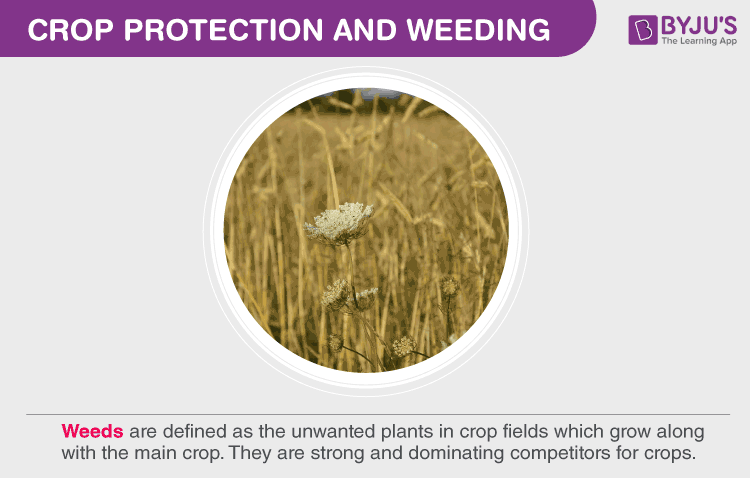Integrated Weed Management (IWM) is a long-term management approach to manage weeds through certain techniques. These techniques are a combination of biological, physical, chemical, mechanical and cultural practices. Overall, these help to improve crop production, revenue, and environmental condition. Before managing the weeds, we should know the definition and impact of weeds on various components like environment, economic and other parts of society.

What is Weed?
Weeds are defined as the unwanted plants in crop fields which grow along with the main crop. They are strong and dominating competitors for crops. Their copious seed production, quick population establishment, and adaptation characteristics make them tough competitors and help in their survival. Common examples of weeds are grass, algae, Amaranthus, Chenopodium.
Weeds compete for essential components required by crops. They compete for light, water, nutrients, and space. They reduce the yield and sometimes they are sources of diseases as well.
Types of Weeding
There are different types of weeding:
Hand Pulling and Cultivation
This refers to the process of weed removal by hands. Certain tools such as a shovel can be used for the task.
Pre-emergent herbicides
Pre-emergent herbicides prevent the growth of weeds. It is applied to the surface of the ground after planting perennial or annual plants. The plant should be in an active growth stage for effective results.
Mulches
Mulches are spread on the garden to restrict the access of the sun to the weed seeds, thereby, preventing the growth of the weeds.
Also Read: Crop Production
Crop Protection through Weeding
Weeding is the removal of weeds from the field. It is an effective pre-harvesting method of crop protection and crop production management. Weeds act as competitors of the crop for various resources required for growth like nutrients, light, water, etc. so it has to be removed as it may cause interference and decrease the yield.
Weeds can be controlled in many ways. Weed management includes land preparation, water management, hand weeding, hand hoeing, crop rotation, and herbicides.
Land preparation helps in the removal of seeds and uprooting of weeds before sowing of seeds of the main crop. Hand weeding is done manually which is very tiresome and time-consuming.
Nowadays, weedicides and herbicides are most commonly used and are effective ways of weeding. Chemicals like MCPA, 2,4-D are some commonly used weedicides. They can be applied at three stages like before and after crop planting and after weed emergence. But these chemicals can cause health hazards and environmental issues.
Weeds are beneficial to nature but it spoils the crop. Thus, weeds need to be controlled to prevent their impact on living beings.
Also Read: Crops
To know more about weeding and crop protection through weeding, keep visiting BYJU’S website or download BYJU’S app for further reference.

it was really helpful for me , you used easy words that was easy to undertand
thanks for helping me really helpful
Thanks for giving important points
Thanks BYJU’S this answer was helpfull to me